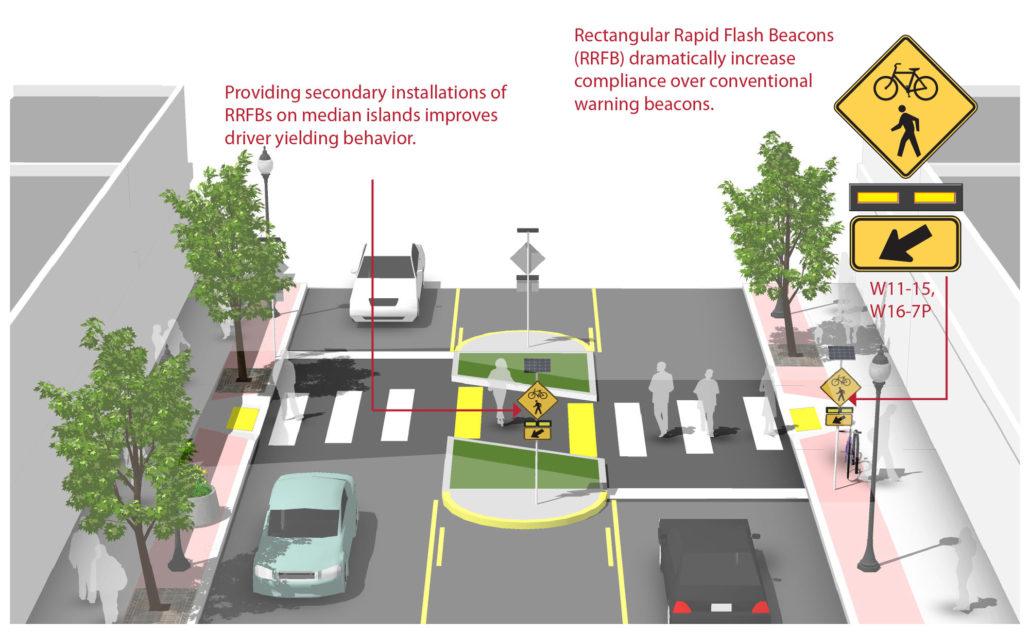RRFBs in the Next MUTCD
Update: As of November 19, 2023, the 11th Edition of the MUTCD has been issued with the inclusion of RRFBs in Chapter 4L. Read more about it here.
RRFBs were first introduced under an interim approval with the Federal Highway Administration (FHWA) in 2008. Since that time, and due to the high effectiveness of the device, the use of RRFBs as a crosswalk enhancement has become widespread.
Today, we here at Availed Technologies are going to outline RRFBs proposed role in the next MUTCD– including the most significant proposed changes to it to enhance pedestrian safety.
Let’s jump right in:
The Absence of an Updated MUTCD
In the absence of an updated version of the Manual on Uniform Traffic Control Devices (MUTCD), the RRFB has remained under an interim approval for well over a decade. On March 4th, 2022 FHWA Issued a Status of Rulemaking for the Eleventh Edition of the MUTCD.
According to this update, The Infrastructure Investment and Jobs Act directs USDOT to update the MUTCD by no later than May 15, 2023.
As one would expect, RRFBs are a key feature of the recommended changes as noted in the FWHA, U.S. Department of Transportation (DOT) notice of proposed amendments (NPA). These recommended changes orbit around the incorporation of provisional traffic control devices.
The Incorporation of Provisional Traffic Control Devices
The incorporation of provisional traffic control devices currently under Interim Approval, including pedestrian-actuated rectangular rapid-flashing beacons at uncontrolled marked crosswalks, green-colored pavement for bicycle lanes, red-colored pavement for transit lanes, and a new traffic signal warrant based on crash experience.
It is also noteworthy that several other key proposed changes to the MUTCD focus on pedestrians and bicyclists, mainly:
- Improvements to safety and accessibility for pedestrians, including the location of pushbuttons at signalized crosswalks, crosswalk marking patterns, and accommodations in work zones
- Expanded traffic control devices to improve safety and operation for bicyclists, including intersection bicycle boxes,two-stage turn boxes, bicycle traffic signal faces, and a new design for the U.S. Bicycle Route sign
The National Committee on Uniform Traffic Control Devices (NCUTCD) recommended changes to the MUTCD are very similar to the Interim Approval (IA-21). One significant addition is guidance on the use of RRFBs at intersections with two crosswalks on an uncontrolled approach. Additional guidance is provided for the use of RRFBs with overhead-mounted signs.
The Role of RRFBs in the Future of Pedestrian Safety
Here at Availed Technologies, we have over 25 years of experience in the Solar LED industry. We understand that providing a best-in-class product demands the support of industry-leading partners, and we are very proud to be represented by some of the most trusted companies in the business.
We strongly encourage you to read more about the MUTCD proposed changes today– and, if you have any questions, to reach out to our team!



